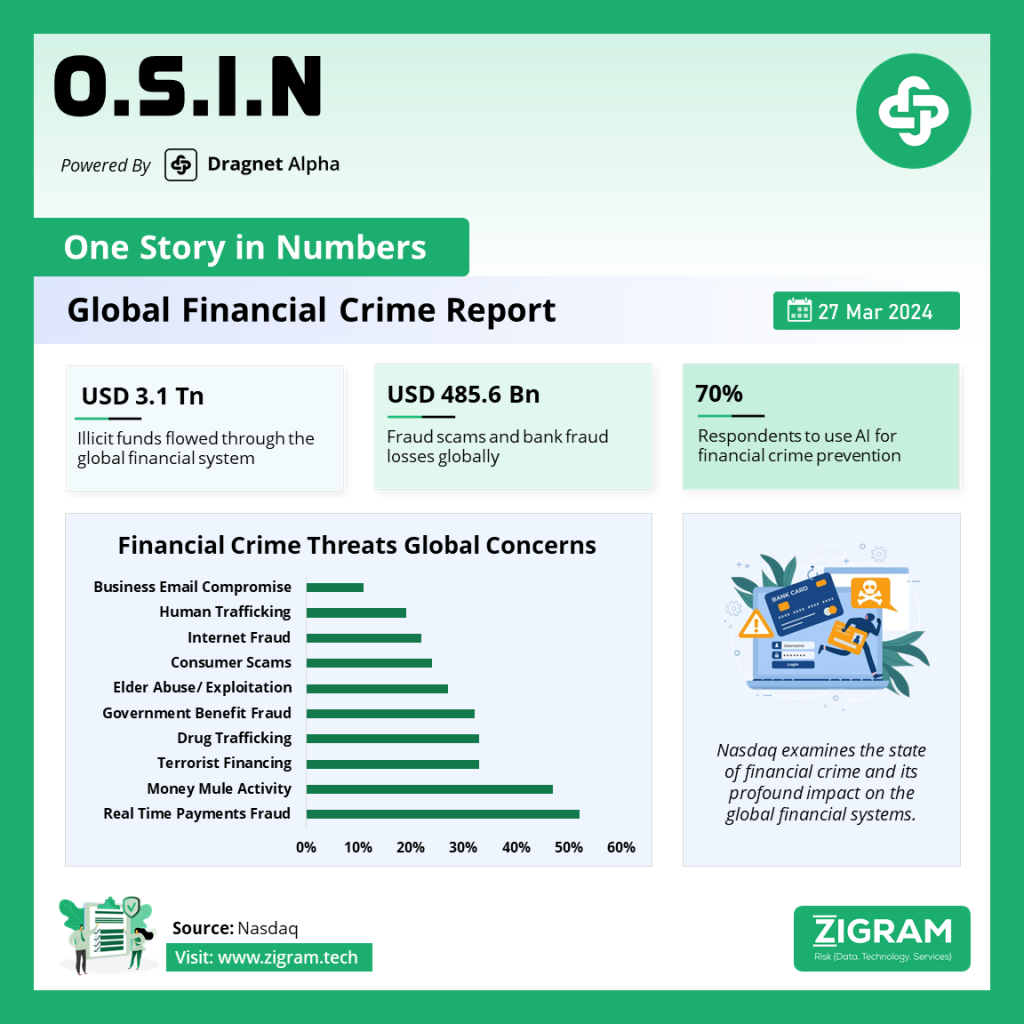Published Date:
Financial crime remains a persistent threat to the stability and integrity of the global financial system. Despite concerted efforts to combat it, the sophistication and scale of illicit activities continue to evolve, presenting significant challenges to regulators, law enforcement agencies, and financial institutions worldwide. A comprehensive overview of the state of financial crime is essential for understanding its impact and formulating effective strategies to combat it. In this article, we delve into a recent Financial Crime Report by Nasdaq, which provides valuable insights into the scope, scale, and top threats of financial crime globally.
1. Examining the State of Financial Crime
The Financial Crime Report offers a holistic examination of financial crime, drawing on expert research, industry perspectives, and survivor stories. It serves as a vital resource for stakeholders seeking to understand the multifaceted nature of financial crime and its ramifications on society. By synthesizing diverse perspectives, the report sheds light on the challenges and opportunities in combating illicit financial activities.
2. Global Scale of Financial Crime
In 2023, the global financial system grappled with an estimated $3.1 trillion in illicit funds, underscoring the magnitude of the challenge posed by financial crime. These illicit funds encompassed various nefarious activities, including money laundering and fraud schemes. Money laundering, in particular, emerged as a pervasive issue, with trillions of dollars fueling criminal enterprises such as human trafficking, drug trafficking, fraud scams, and bank fraud. The staggering scale of illicit financial flows highlights the urgent need for enhanced regulatory measures and collaborative efforts to stem the tide of illicit activities.
3. Identifying Top Threats
Anti-financial crime professionals identified several key threats that warrant heightened attention. Foremost among these concerns is the threat of fraud perpetrated through real-time and faster payment systems, reflecting the growing adoption of digital financial services and the associated risks. Additionally, the proliferation of complex typologies poses significant challenges, as criminals continually innovate to evade detection and exploit vulnerabilities in the financial system. Other pressing threats include money mule activity, drug trafficking, terrorist financing, and human trafficking, underscoring the interconnected nature of financial crime and illicit activities.
4. Current Challenges
The rapid pace of innovation, coupled with the complexity of financial crime, presents formidable challenges for financial institutions and regulatory authorities alike. As criminals leverage advanced technologies and sophisticated techniques to perpetrate illicit activities, traditional approaches to financial crime detection and prevention may prove inadequate. Moreover, navigating the intricate web of global regulatory frameworks adds another layer of complexity, requiring robust compliance measures and enhanced due diligence practices.
5. Opportunities and Potential Solutions
Despite the daunting challenges posed by financial crime, there exist opportunities to strengthen defenses and mitigate risks effectively. Respondents to the Financial Crime Report expressed confidence in leveraging technology, such as artificial intelligence, data analytics, and machine learning, to bolster financial crime prevention efforts. These advanced tools offer enhanced capabilities for detecting suspicious activities, identifying patterns of illicit behavior, and mitigating emerging threats in real time. Moreover, improved regulation and industry collaboration are deemed indispensable in combating financial crime effectively. By fostering greater transparency, information sharing, and coordination among stakeholders, regulatory bodies can create a more resilient and secure financial ecosystem.
In conclusion, the Financial Crime Report provides a comprehensive overview of the global landscape of financial crime, offering valuable insights into its scale, impact, and top threats. By harnessing the power of technology, strengthening regulatory frameworks, and fostering collaboration across sectors, stakeholders can fortify defenses against illicit financial activities and safeguard the integrity of the global financial system. As the fight against financial crime continues, collective efforts and proactive measures are essential to stay ahead of evolving threats and preserve trust and stability in the financial marketplace.
- #FinancialCrime
- #GlobalImpact
- #IllicitFunds
- #FraudThreats
- #RegulatoryChallenges
- #TechnologySolutions
- #ArtificialIntelligence
- #DataAnalytics
- #MoneyLaundering
- #FinancialInstitutions
